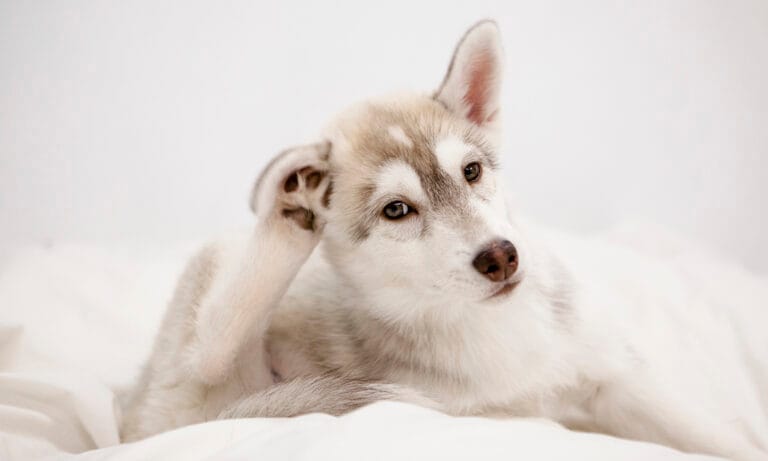Like people, dogs and cats can suffer from allergies. Pets can be allergic to many substances, but the most common allergens are:
- Fleas (flea bite dermatitis)
- Environmental (caused by pollens, trees, grasses, mold and dust mites)
- Food (caused by ingredients in the pet’s food).
Read on to learn what causes food allergies as well as what cat and dog food allergy symptoms look like and what you can do to help.
What Causes Pet Food Allergies?
“A food allergy—food hypersensitivity—is caused when the immune system misidentifies a protein as foreign and mounts an immune response,” says Jordan Siegel, DVM, director of technical services for Central Life Sciences/Central Garden & Pet in the greater Chicago area.
A food sensitivity or food intolerance, on the other hand, refers to adverse food reactions—typically vomiting and/or diarrhea—that does not involve the immune system.
Dogs and cats are not born with food allergies. Most pets who develop food allergies have been eating their normal diet of pet food for many years without any problems, Dr. Seigel says. This can come as a surprise to pet parents who are now faced with choosing a new diet for their cat or dog.
Cat and Dog Food Allergy Symptoms
Dog food allergy symptoms can vary. According to Dr. Siegel, common signs of food allergies include:
- Itching indicated by excessive facial scratching or rubbing
- Chewing or licking of the legs or feet and the anal area
- Recurrent ear infections (sometimes)
Cat food allergy symptoms include:
- Itchy skin, especially excessive scratching or rubbing of the face and neck
- Skin scabs
Diagnosing Food Allergies
At this point, there is no simple or accurate test to diagnose food allergies in dogs and cats, Dr. Siegel says. If your pet is exhibiting cat or dog food allergy symptoms, your vet likely will recommend an elimination diet trial to try to pinpoint which food ingredients are causing your pet’s symptoms, or at least identify which ingredients do not cause problems.
This process includes feeding your pet a limited-ingredient diet that contains one protein source and one carbohydrate source that your pet never has eaten before. The purpose is to see if your dog’s condition improves on this novel food diet. This process works for cats, too.
The Best Dog Food for Allergic Pups
If your dog was diagnosed with food allergies, you might wonder what is the best dog food for allergies. A lot of commercial dog foods contain many different ingredients, which can be problematic for pet parents who are trying to avoid certain food ingredients.
Luckily, some pet-food manufacturers offer limited-ingredient and grain-free diets to make it easier to choose one that might work for your allergic dog. Check out AvoDerm’s Grain-Free Limited Ingredient Diet lamb and sweet potato recipe or its Grain-Free Limited Ingredient Diet trout and pea recipe, both of which were specially designed to allow pet parents to regularly switch flavors for their dogs without the worry.
The Best Cat Food for Allergic Kitties
What’s the best cat food for allergies? Like dogs, cats might react to certain proteins or grains commonly found in pet foods. Consider AvoDerm’s Grain-Free Duck with Turkey Meal cat food, which contains no fish or chicken to help minimize allergens.
Essential Fatty Acids and Food Allergies
Veterinarians often recommend essential fatty acids (called EFAs) for pets who have itchy skin caused by food allergies. Omega-3 fatty acids like DHA and EPA can lower inflammation.
Although you can give your pet EFAs in supplement form, some dog and cats foods include essential fatty acids. For example, AvoDerm Natural Grain-Free tuna and crab canned cat food, which provides omega-3 and 6 fatty acids for skin and coat health.
By: Jackie Brown
Featured Image: By Chewy Studios
Share:













